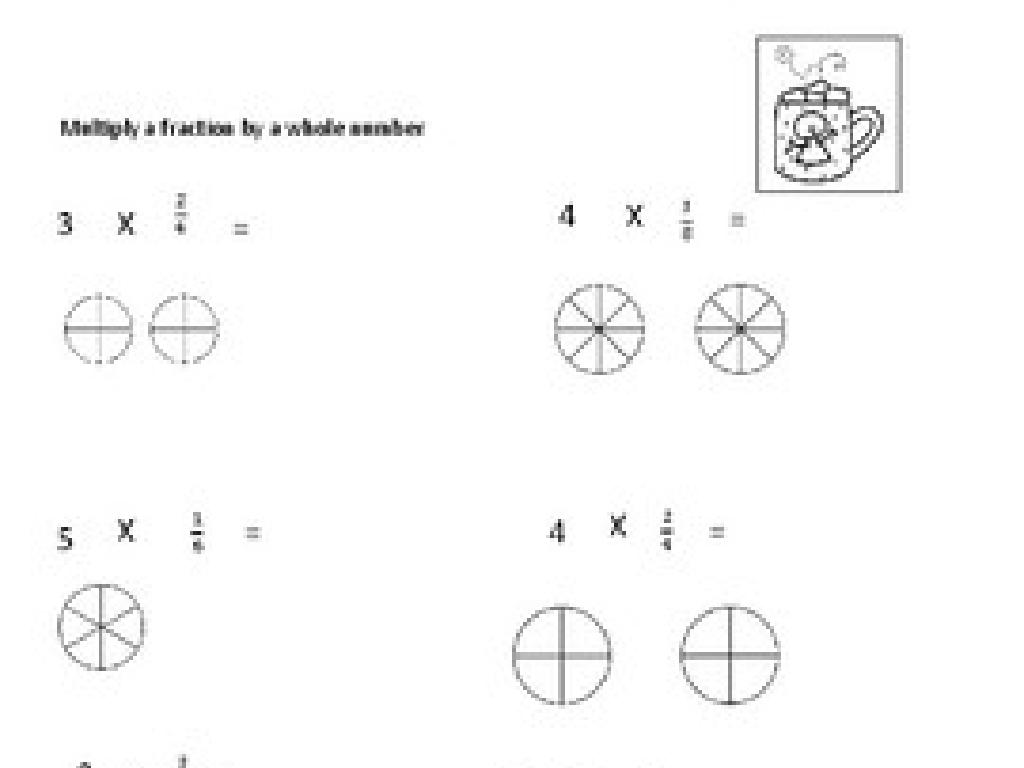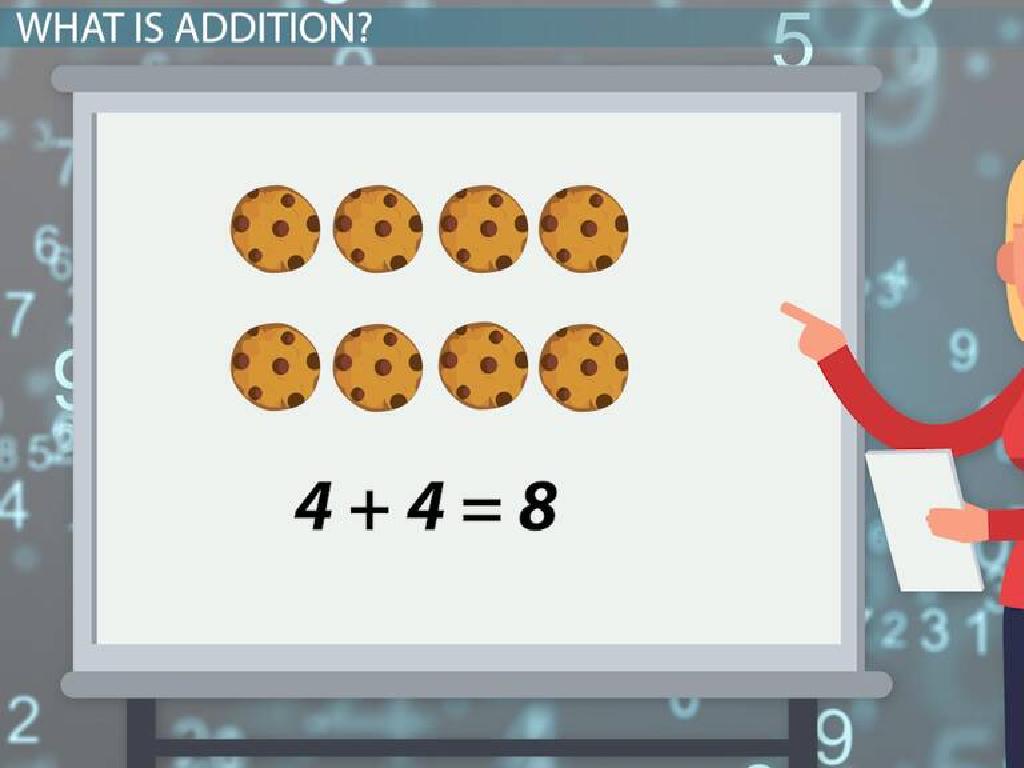Choose Between Personal And Reflexive Pronouns
Subject: Language arts
Grade: Seventh grade
Topic: Pronoun Types
Please LOG IN to download the presentation. Access is available to registered users only.
View More Content
Pronoun Types: Personal vs. Reflexive
– Different types of pronouns
– Focus on Personal & Reflexive
– Personal: ‘I, you, he, she, it, we, they’, Reflexive: ‘myself, yourself, himself, herself, itself, ourselves, yourselves, themselves’
– Choosing the correct pronoun
– Context determines which pronoun fits
– Significance of correct usage
– Avoids confusion & improves clarity in communication
|
This slide introduces students to the broader category of pronouns, with a specific focus on personal and reflexive pronouns. Personal pronouns replace nouns that name people or things, while reflexive pronouns are used when the subject and the object of a sentence are the same. Emphasize the importance of choosing the correct pronoun to maintain clarity in communication. Provide examples to illustrate correct usage: ‘She taught herself to play the guitar’ vs. ‘She taught her to play the guitar.’ Discuss how incorrect pronoun usage can lead to confusion. Encourage students to practice by identifying and using both types of pronouns in sentences.
Pronouns: Personal and Reflexive
– Pronouns substitute for nouns
– Examples: I, you, he, she, it, we, they, myself, yourself
– Personal: I, you, he, she, it, we, they; Reflexive: myself, yourself, himself, herself, itself, ourselves, yourselves, themselves
– Pronouns prevent repetition
– Using pronouns keeps writing concise
– They clarify sentences
– Clear pronouns make sentences easier to follow
|
Begin with a review of pronouns, emphasizing their role in replacing nouns to avoid redundancy and make sentences more readable. Provide examples of both personal and reflexive pronouns, ensuring students understand the difference: personal pronouns act as the subject or object in a sentence, while reflexive pronouns refer back to the subject. Discuss how using pronouns effectively can improve sentence clarity and coherence. Encourage students to identify pronouns in their reading and practice using them in their writing, paying special attention to choosing the correct pronoun based on the context.
Personal Pronouns in Sentences
– Personal pronouns represent people or things
– Subjective: I, you, he, she, it, we, they
– Used as the subject of a sentence: ‘She runs fast.’
– Objective: me, you, him, her, it, us, them
– Used as the object of a sentence: ‘The teacher called me.’
– Let’s examine sentence examples
– ‘I ate the pizza.’ (subjective) vs ‘The pizza was for me.’ (objective)
|
This slide introduces the concept of personal pronouns and their roles in sentences. Personal pronouns are used to replace specific nouns, which can be people, animals, or things, to avoid repetition and simplify sentences. Subjective pronouns act as the subject of a verb, while objective pronouns receive the action of the verb as objects. Provide examples of each type in sentences to illustrate their use. Encourage students to create their own sentences using both subjective and objective personal pronouns to reinforce their understanding. Discuss how choosing the correct form of a personal pronoun can change the meaning of a sentence and is essential for clear communication.
Understanding Reflexive Pronouns
– Reflexive pronouns link back to the subject
– They reflect the action back onto the subject, e.g., ‘She prepared herself.’
– Singular and plural forms end in ‘-self’ or ‘-selves’
– ‘Myself’ for I, ‘ourselves’ for we, and so on
– Examples: ‘myself’, ‘yourself’, ‘themselves’
– ‘I did the homework myself.’ or ‘We enjoyed ourselves at the party.’
– Used when subject equals object
– In ‘Anna rewarded herself,’ Anna is both doing and receiving the action.
|
This slide introduces reflexive pronouns, which are used when the subject of a sentence is also the object. Explain that these pronouns are essential for students to recognize and use correctly, especially in writing. Provide clear examples to illustrate how reflexive pronouns function within a sentence. Encourage students to create sentences using reflexive pronouns to solidify their understanding. Discuss how these pronouns add emphasis to the subject’s action upon itself and clarify that they should not be used when the subject and object are different.
Choosing the Right Pronoun: Personal vs. Reflexive
– Personal vs. Reflexive Pronouns
– Understand when to use ‘I’ or ‘myself’
– Use reflexive for self-actions
– ‘She treated herself’ shows action done to the doer
– Use personal for others’ actions
– ‘He helped him’ shows action done to another person
– Practice with examples
|
This slide aims to clarify the difference between personal and reflexive pronouns and when to use each. Personal pronouns are used when the subject and object of the sentence are different entities, while reflexive pronouns are used when the subject is performing an action on itself. For example, ‘I taught myself’ uses a reflexive pronoun because the subject ‘I’ is also the object ‘myself’. In contrast, ‘She taught me’ uses a personal pronoun because ‘She’ is the subject and ‘me’ is the object. Encourage students to create sentences using both types of pronouns to solidify their understanding. Provide additional examples and exercises to practice identifying and using the correct pronouns in various contexts.
Personal vs. Reflexive Pronouns: Practice
– Determine the correct pronoun: myself or me
– Choose between her or herself
– Decide on them or themselves
– Understand pronoun usage
– Reflexive pronouns reflect back to the subject. Personal pronouns refer to a specific person or thing.
|
This slide is designed as a class activity to help students practice choosing between personal and reflexive pronouns. Personal pronouns are used to refer to a specific person or thing in a sentence, while reflexive pronouns are used when the subject and the object of the sentence are the same. For the activity, students will identify which pronoun fits correctly in the given sentences. Encourage students to consider whether the action is being done to the subject itself (reflexive) or to another (personal). After completing the sentences, discuss why each answer is correct. Possible activities include peer review, where students exchange their answers with a classmate, or a game where students hold up cards with the correct pronouns.
Class Activity: Personal vs. Reflexive Pronouns
– Write 5 sentences with personal pronouns
– Write 5 sentences with reflexive pronouns
– Share sentences with the class
– Practice presenting skills and pronoun usage
– Explain the pronoun choices
– Discuss why certain pronouns fit better
|
This activity is designed to reinforce the students’ understanding of personal and reflexive pronouns through practice and peer sharing. Personal pronouns replace nouns that refer to people or things, while reflexive pronouns are used when the subject and the object of a sentence are the same. Instruct students to work in pairs to foster collaboration. After writing their sentences, each pair will present some of their sentences to the class, explaining why they chose specific pronouns. This will help students learn from each other and clarify their understanding. As a teacher, be prepared to provide feedback and correct misunderstandings. Possible activities for different pairs could include creating sentences based on personal experiences, favorite books, or hypothetical situations.
Conclusion: Pronouns in Practice
– Recap: Pronoun importance
– Homework: Craft a short story
– Incorporate personal and reflexive pronouns
– Use 10 different pronouns
– Show variety in pronoun use
– Ensure correct pronoun usage
– Focus on pronoun-antecedent agreement
|
As we conclude today’s lesson, remind students of the significance of selecting the appropriate personal or reflexive pronoun to maintain clarity in writing. For homework, students are tasked with writing a creative short story that includes at least ten different pronouns, ensuring they are used correctly. This will help reinforce their understanding of pronoun types and their functions within sentences. Encourage creativity, but also emphasize the importance of correct grammatical structure, particularly pronoun-antecedent agreement. In the next class, we can have a few students share their stories to highlight the use of pronouns in different contexts.





